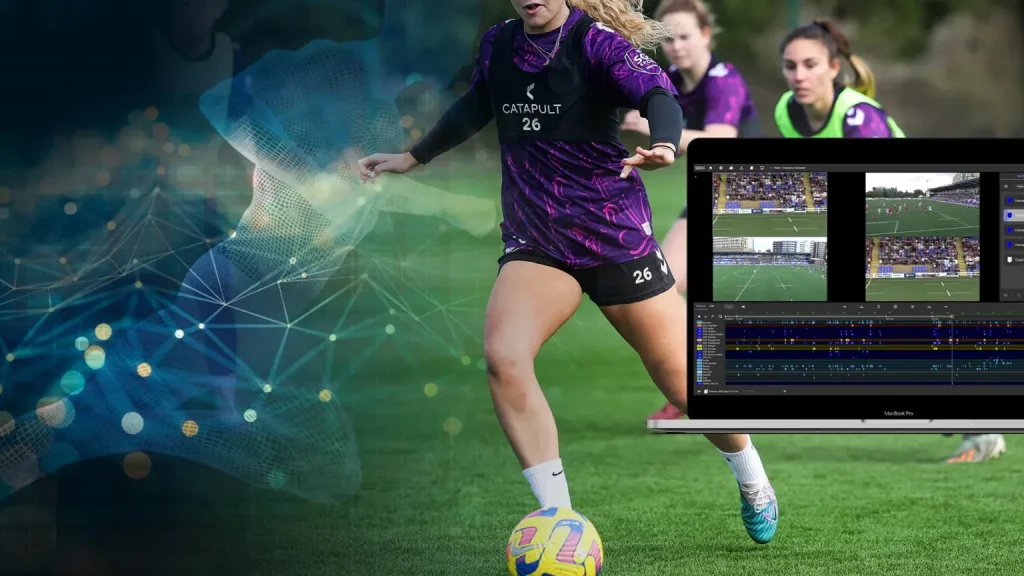Esports vs traditional sports signals a shift in how audiences consume competition, how brands invest in sponsorship, and how leagues adapt to technology-driven engagement. Over the last decade, esports has moved from a niche hobby to a mainstream entertainment engine, fueling esports audience growth and attracting big-name sponsors. Traditional leagues, rooted in stadium culture, are expanding their digital ecosystems to reach digital sports fans and broaden their appeal. The two worlds are increasingly converging, enabling cross-platform storytelling, hybrid events, and collaborations where sponsorships in esports intersect with traditional leagues embracing digital play. As this dynamic evolves, businesses, fans, and athletes can chart opportunities across both digital and physical arenas.
Viewed through an alternative lens, competitive gaming and electronic sports represent modern forms of athletic competition that mirror long-standing fan rituals. These digital competitions share storytelling arcs with traditional sport narratives, while emphasizing streaming culture, influencer ecosystems, and real-time data-driven production. From a brand strategist perspective, cross-platform reach, sponsorship integration, and hybrid event formats open new pathways beyond the stadium and into living rooms, classrooms, and mobile screens. As audiences evolve, the distinction between on-site spectacle and online engagement blurs, inviting leagues and organizers to rethink governance, accessibility, and monetization in a data-informed era.
Esports Audience Growth: Tapping a Global Digital Fanbase
Esports audience growth has accelerated as mobile, PC, and console ecosystems converge, turning a niche audience into a global, engaged community of digital sports fans. Viewers watch across streams, social feeds, and on-demand clips, often in shorter formats that fit busy schedules. This expansion is powered by accessible production, global tournaments, and a culture of community participation.
For brands, the growth unlocks new sponsorship opportunities and data-rich partnerships, with campaigns that track engagement across streams, highlights, and influencer ecosystems. As fans demand authentic storytelling and integrated experiences, sponsorships in esports are shifting toward long-term collaborations that blend on-air, online, and in-game moments.
Esports Trends Shaping the Competitive Landscape
Esports trends show rising viewership on streaming platforms, sharper production values, and increasingly professional ecosystems across mobile, PC, and console.
Traditional leagues are embracing digital play, expanding live streams, second-screen apps, and dynamic clips, creating a more fluid fan experience that resonates with digital sports fans and younger audiences.
Esports vs Traditional Sports: A Spectrum of Opportunity
The two worlds share a core goal of delivering repeatable, compelling moments, and their trajectories are converging as digital platforms extend the reach of established franchises while esports elevates production quality and storytelling.
Hybrid events, cross-training in data analytics and streaming, and joint ventures demonstrate that boundaries are blurring—creating value for fans, players, and sponsors alike.
Sponsorships in Esports: From Data-Driven Campaigns to Global Partnerships
Sponsorships in esports are increasingly data-driven, leveraging in-game moments, audience metrics, and creator ecosystems to craft authentic partnerships.
Brands are weaving esports sponsorships into social campaigns, event activations, and cross-platform collaborations, while traditional leagues explore digital-native assets to widen reach and provide measurable impact.
Traditional Leagues Embracing Digital Play: Hybrid Formats and New Revenue
Traditional leagues embracing digital play are testing virtual exhibitions, hybrid arena events, and franchise esports teams to connect with younger demographics and diversify revenue streams.
These formats help stabilize business models in a fast-evolving market, preserving heritage while meeting modern expectations and expanding the base of digital sports fans.
Future-Proofing Competitive Sport: Insights for Fans, Players, and Brands
Looking ahead, the competitive landscape will live across multiple platforms, with continued esports audience growth, broader mainstream media coverage, and stronger talent pipelines across both digital and traditional ecosystems.
For fans, players, and brands, the next era will emphasize gamified engagement, data-driven performance analysis, and cross-platform experiences that measure impact and foster trust—creating a more inclusive, resilient ecosystem for competitive sport.
Frequently Asked Questions
How do Esports vs traditional sports reflect current esports trends and esports audience growth?
Esports audience growth has surged with streaming platforms, mobile access, and short-form content. In Esports vs traditional sports, esports trends show rapid online viewership expansion, while traditional leagues expand digital distribution to reach broader audiences. Together, they enable cross-platform engagement that attracts sponsors, teams, and fans across both ecosystems.
In Esports vs traditional sports, how do sponsorships in esports differ from traditional sponsorships?
Sponsorships in esports are often data-driven, creator-led, and community-focused, activated through teams, events, and online content. Traditional sponsorships emphasize stadium exposure, legacy branding, and long-term partnerships. The trend is toward integrated campaigns that blend online and offline touchpoints to maximize reach.
How are traditional leagues embracing digital play, and what does that mean for Esports vs traditional sports?
Traditional leagues embracing digital play deploy hybrid events, virtual exhibitions, and franchise esports teams to connect with younger fans. Esports fans and traditional followers benefit from multi-screen experiences and on-demand access to highlights. This collaboration expands the addressable market for competition and sponsorship across both formats.
What esports trends are shaping Esports vs traditional sports and influencing fan engagement?
Esports trends include rapid growth in viewership, mobile-first consumption, and high-production broadcasts. In Esports vs traditional sports, traditional leagues are adopting second-screen experiences and streaming to retain younger audiences, while esports teams pursue broader storytelling. The result is a more fluid, multi-format fan experience across platforms.
Who are the digital sports fans, and how do Esports vs traditional sports strategies address their expectations?
Digital sports fans expect accessibility, immediacy, and social participation. In Esports vs traditional sports, digital sports fans often favor creator ecosystems and bite-size content, while traditional fans value storytelling and heritage. Brands that balance authenticity, community values, and memorable experiences meet both groups’ expectations.
What opportunities exist for brands to activate sponsorships in Esports vs traditional sports, given the rise of sponsorships in esports and traditional leagues embracing digital play?
In the Esports vs traditional sports ecosystem, brands can activate sponsorships across online and offline spaces by blending data-driven storytelling with stadium moments. Cross-platform activations, co-branding, and measurable impact across streams, apps, and live events help maximize sponsorships in esports and in traditional leagues embracing digital play. This integrated approach unlocks new revenue and deeper audience engagement for both worlds.
| Theme | Esports Key Points | Traditional Sports Key Points | Convergence / Notes |
|---|---|---|---|
| Overview | Esports has evolved from niche hobby to mainstream entertainment, attracting millions of viewers and lucrative sponsorships. | Traditional sports remain rooted in long-standing traditions, stadium aesthetics, and loyal athletes. | They form a spectrum of opportunity where digital and physical realms intersect. |
| Landscape & Moments | Powered by streamed content, real-time feedback loops, and communities that co-create value through clips, memes, and social interaction. | Depend on live events, disciplined athletic culture, and global brands anchored by stadium experiences. | Digital platforms extend reach of traditional franchises; cross-pollination informs production quality, storytelling, and hybrid events. |
| Trends shaping | Rapid growth in viewership on streaming platforms; expanding pool of professional players; increasingly sophisticated production values; mobile/PC/console; shorter, highly shareable formats. | Traditional sports expanding digital ecosystems—live streaming, interactive apps, second-screen experiences; new formats to attract younger fans. | More fluid boundary between the two worlds; fans may engage across formats within a single week. |
| Fan base & engagement | Esports fans are early adopters of new platforms; robust communities; fast social engagement; creator-driven content; willingness to pay for premium experiences; sponsorship activations bridging physical and digital. | Traditional sports fans value long-form storytelling, legacy brands, ceremonial live events. | Both crave authentic competition; brands should emphasize performance, transparency, and community values. |
| Sponsorships | Data-driven sponsorships; in-game moments; audience metrics; creator ecosystems; experiential activations during events/streams. | Digital-native campaigns; cross-promotion on streaming platforms; joint ventures across formats; integrated campaigns to amplify reach. | Sponsorships are becoming integrated campaigns across channels, expanding reach and monetization. |
| Traditional leagues embracing digital play | Franchise-like esports teams affiliated with real-world leagues; hybrid events; virtual exhibitions. | Leagues adopting digital play; blended formats; diverse revenue streams; more resilient business models. | Co-branded events; cross-training in data analytics and streaming; shared broadcast infrastructure; broader market growth. |
| Challenges & considerations | Governance, player welfare, sustainability of ecosystems; integrity; data privacy; equitable access; partnerships reflect shared values; measurable impact. | Costs of modernization; maintaining heritage; digital ventures should not dilute core identity; governance, data privacy, equity. | Thoughtful integration builds trust and long-term growth. |
| Future outlook | Continued growth, mainstream media coverage, talent pipelines; multi-platform engagement; data-driven performance. | Tech-enabled fan engagement; broader reach; digestible, immersive content. | Hybrid sponsorships, gamified engagement, and data-driven models that benefit players, teams, and fans. |
Summary
Esports vs traditional sports is not a zero-sum debate but a spectrum of opportunities shaped by changing consumer behavior and technology. As leagues, teams, and brands experiment with new formats, the line between Esports vs traditional sports will blur in productive ways. For fans, this means richer experiences and broader access to unforgettable moments; for sponsors and broadcasters, more channels, more data, and more ways to measure impact. By embracing the strengths of both sides—the storytelling and heritage of traditional sports, and the innovation, speed, and global reach of esports—stakeholders can unlock growth, diversify revenue, and foster a more vibrant, inclusive ecosystem for competitive sport in the years to come.


